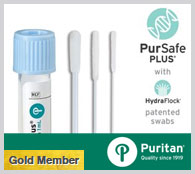Biochemical Markers Used in Diagnosis of Nasopharyngeal Cancer
By LabMedica International staff writers
Posted on 30 Mar 2011
Metabolic profiling of patients with nasopharyngeal carcinoma (NPC) revealed that four chemical in their sera were useful as diagnostic markers.Posted on 30 Mar 2011
Serum metabolite levels can be ascertained by using both liquid and gas chromatography with mass spectrometry techniques (LC/GC-MS) and followed in the blood sera of patients suffering from carcinoma before, during, and after therapy.
In a study performed at Jinan University, (Zhuhai, China), scientists evaluated 51 serum metabolites in 49 NPC patients, 37 throat cancer patients and 40 healthy controls. Nasopharyngeal biopsy tissues were collected from 31 patients with NPC and 27 healthy people who were pathologically diagnosed as nonnasopharyngeal carcinoma. High metabolites were selected and confirmed in NPC tissues. Sensitivity and specificity were appraised for 53 NPC diagnoses.
The LC/GC–MS profiles were significantly different among the three groups. In these profiles, 51 metabolites were considered endogenous metabolites, which included organic acids, amino acids, and fatty acids involved in multiple biochemical processes. These were studied further for their potential to represent the metabolic pattern of the disease and recovery states.
The results showed that four metabolites, kynurenine, N-acetylglucosaminylamine, N-acetylglucosamine and hydroxyphenylpyruvate gradually increased from normal nasopharyngeal, atypical hyperplasia to NPC. Their sensitivity and specificity of the four metabolites were respectively 79% and 71%, 78% and 69%, 83% and 68%, 84% and 73% for NPC diagnosis. Three other metabolites, stearic acid, N-acetylgalactosamine and glycine did not change. This implies that these four metabolites may serve as potential markers as after radiotherapy, the four metabolites decreased gradually, tended to a normal level, and were associated with rate of tumor reduction.
The authors concluded that the four metabolites, hydroxyphenylpyruvate, N-acetylglucosaminylamine, N-acetylglucosamine, and kynurenine, could potentially serve as biomarkers for the early diagnosis and efficacy of therapy, and could also be used to monitor the recurrence and metastasis of NPC. The study was published online on March 12, 2011, in Clinical Biochemistry.
Related Links:
Jinan University









 Array (4-plex).jpg)


